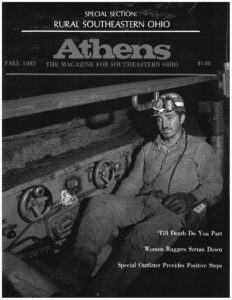Prevention, better than a cure
This week was my five-year colonoscopy. The fifth in my life. Colonoscopies are the best way to prevent colon cancer.
Fourteen years ago, my brother passed from colon cancer at age 57. He didn’t like doctors, checkups or colonoscopies. He finally went to the doctor when he was too weak to walk across a room. By then it was too late. He died two months later. It was sad. He would have been proud, if he had lived, to see the success of his children and would have enjoyed playing with his grandchildren. His grandchildren are fine young adults. We enjoy talking to them.
A colonoscopy could have prevented my brother’s cancer. The colonoscopy spots polyps before they become cancerous. The doctor removes them immediately. Some good has come from my brother’s death. Our family gets their colonoscopies as required. My understanding is, colon cancer is slow growing but can be deadly if not identified early. Preventing the disease is easier than curing it.
The colonoscopy itself is easy. The procedure typically takes less than 30 minutes. I was asleep for all of mine and woke up quickly afterward without side effects and ready to eat after over 24 hours without solid food.
I don’t recall what the anesthesia was for my first colonoscopy. It was amazing. I don’t remember falling asleep. I was talking to the doctor, then he said, “Everything is fine. You can go.”
Surprised, I asked. “You did the procedure?”
“Yes. You are fine.”
The preparation is what I don’t like. The bowel has to be cleaned out. The day before the procedure I was on a clear liquid diet, no solid food. Starting at noon the day prior, I began an enema. It is a good idea to stay close to a toilet. I weighed myself before bed time and found I lost six pounds. I’ve gained five back already.
My wife, Lynnda, believes in prevention. She gets her annual breast exam. It caught her breast cancer at stage zero. Prevention is the reason for annual physicals. We get our annual flu shots and COVID vaccination boosters. To the best of my knowledge, we haven’t had COVID. We have been exposed plenty of times over the years especially at large conferences. Prevention is important.
Preventing injuries is the purpose for wearing PPE (personal protective equipment) like hardhats, steel-toed shoes and safety goggles. As a manager, I would occasionally see someone on a grinder without googles. The excuse I got was, “It’s a quick job. Didn’t think it was worth the time to get the googles.” Putting on PPE takes a little time but is less painful than getting a hot piece of metal in an eye. During my corporate days I saw a lot of injuries that could have been prevented. After an injury, there is always time to go to the hospital.
In 2012, Lynnda survived a serious rollover car accident because she wore a seatbelt. While she was in the hospital, there was a young man with a serious brain injury. His accident wasn’t as severe but he didn’t wear a seatbelt and was ejected from his vehicle. Wearing a seatbelt can prevent serious injury in an accident.
The purpose of a safety program is to prevent accidents and injuries. Prevention is easier, cheaper and less painful and avoids a serious injury. Being involved for years with many companies and safety programs, I still recall slogans like “Take two for you,” a habit to take a couple extra seconds to do the right thing instead of an unsafe shortcut.
Airplane pilots and truck drivers do pre-trip inspections before they leave. It is better to find a problem before getting in the air or on the road. As a manager, my mechanics did monthly truck preventive maintenance. Initially the mechanics fought against the extra work to do the inspections, until they started fixing things in the warm shop that would have failed in the field and repaired in the cold and mud. Preventive maintenance made us more efficient and lowered maintenance cost.
In business and in our personal lives, it is always helpful to anticipate and prevent problems from happening. Next week Shale Crescent USA hosts a company coming from Israel looking for a site for their U.S. headquarters. They have an AI software that helps organizations anticipate and avoid serious problems. They use it for the Israeli military.
This week at a business conference we heard, “The electric grid is close to breaking. We can expect a 100% increase in blackouts by 2029.” Two weeks ago, at the Ohio Energy Conference we heard from a PJM (our power grid) executive: “Without additional baseload power, blackouts could happen as soon as 2027.”
Power demand is increasing faster than shut-down coal and nuclear power plants can be replaced. The grid hasn’t seen this kind of growth for decades. A presentation by Jobs Ohio showed power demand from increased manufacturing started in 2021, before data centers and AI. PJM power demand is expected to double by 2050.
This challenge was ignored the past four years as baseload power like coal and nuclear were shut down and “replaced” with intermittent power. Natural gas infrastructure was restricted. EVs and other electrification demand was added to the grid. Those with courage to point out the problem were largely ignored.
Ignoring a preventable problem can have disastrous results. The Texas Freeze of 2021 killed 246 people and caused an estimated $200 billion in damage. For a fraction of this cost, the disaster could have been prevented.
The USA and our region have the resources to solve our power problem keeping lights and heat on. There are challenges to overcome. We will share more information after next week’s West Virginia Governor’s Energy Conference.
Colonoscopies and breast exams are worth doing to prevent serious problems later. The old saying, an ounce of prevention is worth a pound of cure, is still true.
Greg Kozera, gkozera@shalecrescentusa.com, is the director of marketing for Shale Crescent USA. He is a professional engineer with a masters in environmental engineering and over 40 years of experience in the energy industry. Greg is a leadership expert, high school soccer coach, professional speaker, author of four books and many published articles.


